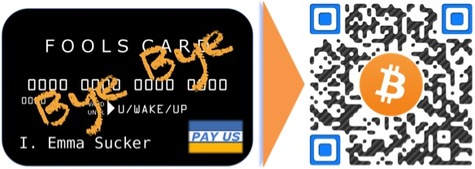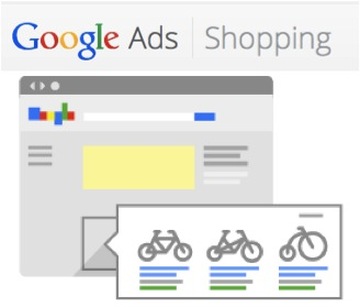
The controversies that swirl around Bitcoin often obscure one of the most significant technical breakthroughs of the crypto currency: the ability to transfer cash instantly without having to share bank account information with the receiving party.
Secure: No Exchange Of Bank Account Information
Technically speaking, transacting Bitcoins over the peer-to-peer network is incomparably safer than sharing your credit card information over the phone, email, internet, leaving your credit card in a plastic folder at a restaurant, or handing it over to random clerks or sales reps multiple times a day. Bitcoin relies on the most advanced cryptographic algorithm to date. The resulting gain in security far outweighs money-laundering concerns. In addition, as recent Bitcoin-related arrests attest, not having to exchange your account information with the receiving party (and vice versa) doesn’t mean your transactions are invisible. And as Overstock CEO Patrick Byrne eloquently pointed out, the favorite currency of criminals still remains the green paper dollar, and yet, for all of that, the greenback is not less viable as a mainstream currency.
Analogous to our railway or power grid, the U.S. credit card and payment system has been rendered obsolete and inefficient by decades of underinvestment in technology innovation. Despite being one of the largest payment markets in the planet, the U.S. payment market is probably one of the least secure. Most major markets switched over 20 years ago to the microchip card system, where one’s secret pin number is requested and required upon each transaction. The reason why U.S. credit card companies haven’t made the switch yet? Cost. Upgrading every card and every payment terminal with patented technology would hurt the bottom lines. But as the latest massive hacks to Target, Neimann Marcus, etc. have shown the public, the U.S. payment system is in dire need of an upgrade.
Enter Bitcoin, with the potential to disrupt an unwieldy and antiquated status quo. Equipping retailers and consumers with bitcoin accounts would potentially need no infrastructure upgrade. In that respect, Bitcoin is the epitome of a disruptive technology: it’s currently imperfect—for all the issues that have already been mentioned in the press—but it does the job of transferring money from one party to another better: faster, more securely, and cheaper.
Fast: Almost Instant Transfer
Have you noticed it always takes three business days via traditional media, like wire transfer or ACH, for money to change “hands”? It’s no secret that the ‘holding period’ is a key income stream for financial institutions. This time window is supposed to protect against fraud but with the speed of today’s electronic communication it hardly takes 3 days to figure out that the emitting party does not, for example, have the cash required for transfer. So while there is some transfer risk, the bank is profiting by holding your cash a little longer than strictly needed. A Bitcoin transaction, however, takes about ten minutes. That said, until there is more liquidity in the Bitcoin market, the conversion back to dollars could take a little longer.
Good: Digital Currency Will Help The Poor Says Bill Gates
Bill Gates, at an “Ask me Anything” Reddit session, shared his belief than “Over the next five years...digital money will catch on in India and parts of Africa and help the poorest a lot.” He used Kenya as an example, where almost half the transactions are executed with M-pesa, a mobile phone based money transfer and microfinancing service offered by Kenyan leading telecom carriers. In countries with weak financial systems and structures, a self-regulating, decentralized system, with low transactional fees holds enormous appeal.
In some ways, this is a repeat of the huge success of cell phones in Africa. Many countries in Africa were early mass adopters of cellular technology. Cell phones may jar with most people’s perceptions of the continent, but their success was inevitable on a continent where landline infrastructure was unreliable, network penetration outside the cities was weak, and copper-wire theft was endemic. Installing a few cellular base stations was cheaper, and easier to maintain – and brought millions into the modern economy.
Maintaining a functioning and reliable financial system is complex and expensive, and the cost is ultimately borne by the ‘bankable’ consumer. But not everyone is ‘bankable’. According to the World Bank, half of the adult population of the world does not own a bank account. In the U.S., one in every nine households has no checking account. Reasons vary: from not enough money to open and keep the minimum cash balance required by most banks, to not having the administrative paperwork or identification required, to physical distance from a bank branch, and so on. However, the cost of a transaction for people outside of the traditional banking system can be exorbitant: in the U.S., check cashing services can have fees of about 2%, and money orders can be upward of $1 a piece. In contrast, Bitcoins can be sent securely via SMS for free. Despite Bitcoin’s hi-tech nature, the benefits of a decentralized peer-to-peer digital cryptographic currency might be felt most among the financially and socially marginalized.
Cost-Effective: More Economical Than Credit Cards For Both Small Businesses And Large Merchants
The United States’ addiction to credit is expensive. The 2-3% swipe fees retailers have to pay to credit card companies are being passed on to the consumer as that cost is folded into retailer pricing. Fifty-three percent of general purpose card payments were done using a credit card in 2012 (by dollar value) according to the 2013 Federal Reserve Payment study, i.e. on average retailers have to increase their sales price by about 1.5% to offset credit card fees. Some low cost retailers (e.g. Aldi) don’t accept credit cards for just that reason: to ensure the consumer that they’re getting their best everyday low prices. Margin in the grocery business is so low that 1.5% makes a big difference.
So Overstock CEO Patrick Byrne's position is hardly surprising. Partnering with Coinbase costs the retail giant only 1% on conversion fees back to U.S. dollars, a major savings in comparison with the 2-3% transaction fees of credit card companies. Only a debit card transaction might beat that rate. And the bitcoin transfer is secure. Average online fraud rates hover around 1% of total online sales in the U.S. We’re not even looking at the number of people abandoning their online shopping cart because their banks blocked their credit card on suspicion of fraudulent activity. Any dent in this number would be good news for retailers. So, adding bitcoin as a means of payment is more than a marketing move, it’s an financial move. As for now, Coinbase does not offer Bitcoin loans, so for people who like to spend more than they can afford, credit cards still remain the answer. Though bitcoin loans don’t require a big of stretch of the imagination, with the currency gaining more stability, and with a peer-to-peer network vs. a government controlled central bank deciding a base rate, the Bitcoin network would probably be able to provide more market-based, competitive rates to merchants and consumers than credit card companies would be able to offer.
As for the pseudonymous Satoshi Nakamoto who wrote the Bitcoin white paper and vanished, taking with him billions of dollars worth of bitcoins that he mined? We are all jealous, but, hey, he compensated himself for his invention and let the world use it for free.
Bitcoin Adoption
Bitcoin viability relies on a sizable adoption rate of the currency by consumers and retailers, as well as on getting regulators and the financial community on board. Key to Bitcoin success will be the ability of the early adopters and visionaries to educate the rest of us—consumers, merchants and the financial community—to correct some of the misconceptions and alleviate some of the concerns.
Another key to Bitcoin success will be the willingness and ability of all the Bitcoin-based businesses to work closely through organizations like Bitcoin.org. As some regulatory missteps or fraudulent activities have shown, the industry will only be as strong as its weakest link.
The VC community has been successful in the past in navigating choppy regulatory waters and influencing key stakeholders. Paypal, AirBnB, and Uber are just a few examples of successful start-ups that have been able to make room for their innovation within the regulation framework. Time will tell if the Bitcoin community is able to carve out a place for this elegant technology in the cutthroat, free-for-all world of international finance.
Thanks for reading my post this far. Please leave your comments below, I’d love to read your feedbacks and learn more from all of you.


 RSS Feed
RSS Feed